Here are some screenshots of the Windows 7 public beta. I installed it in a
VirtualBox virtual machine and allocated 600MB of RAM to it.
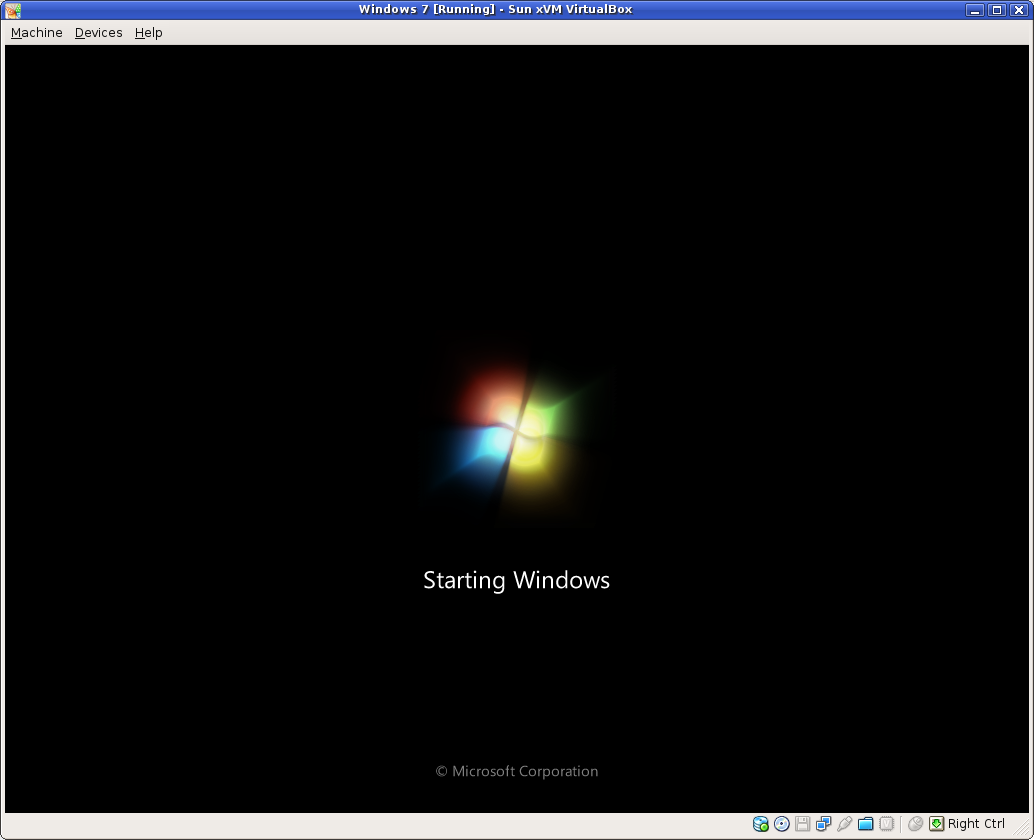
The new and improved sloading screen.

The login screen
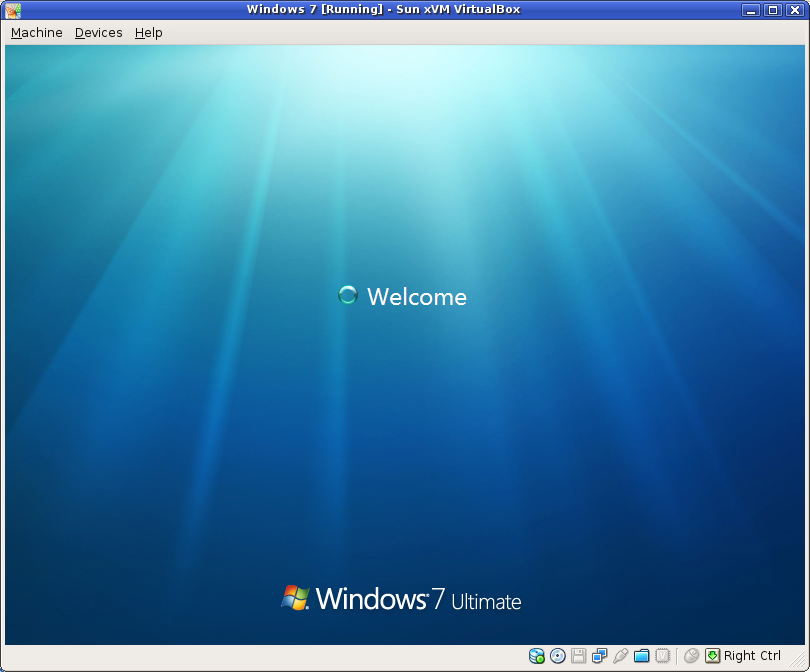
Logging in....
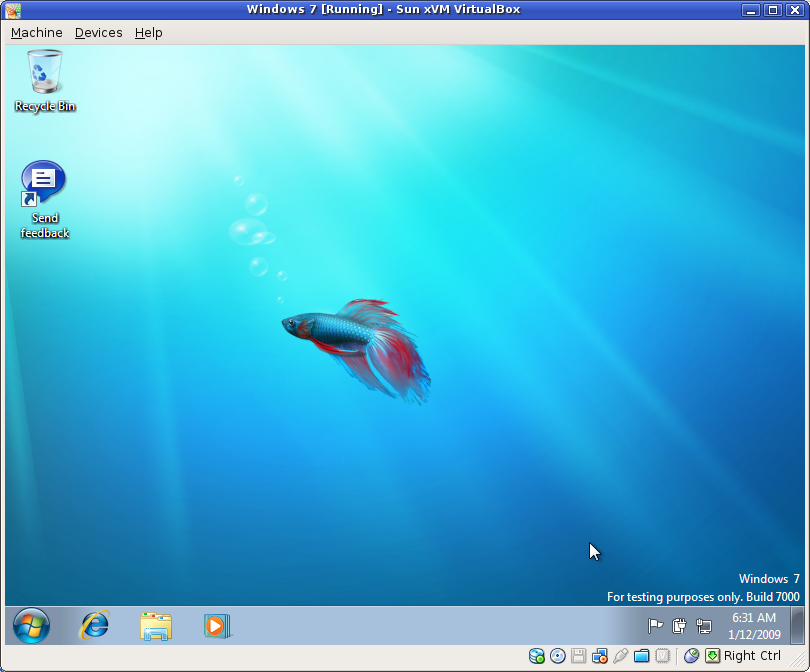
The desktop.... and a fish!!
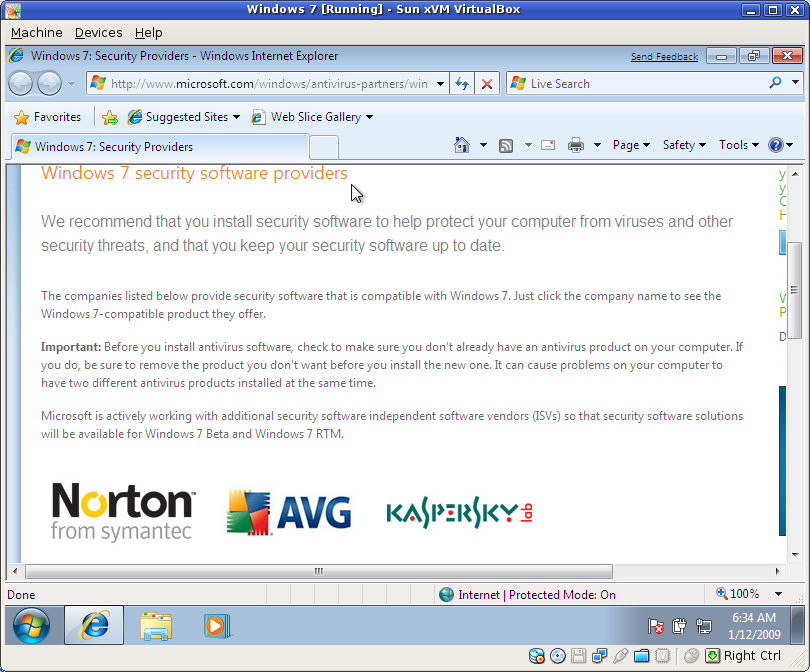
Your choices of Microsoft-sponsored security--the ones that will slow down your
computer the most!
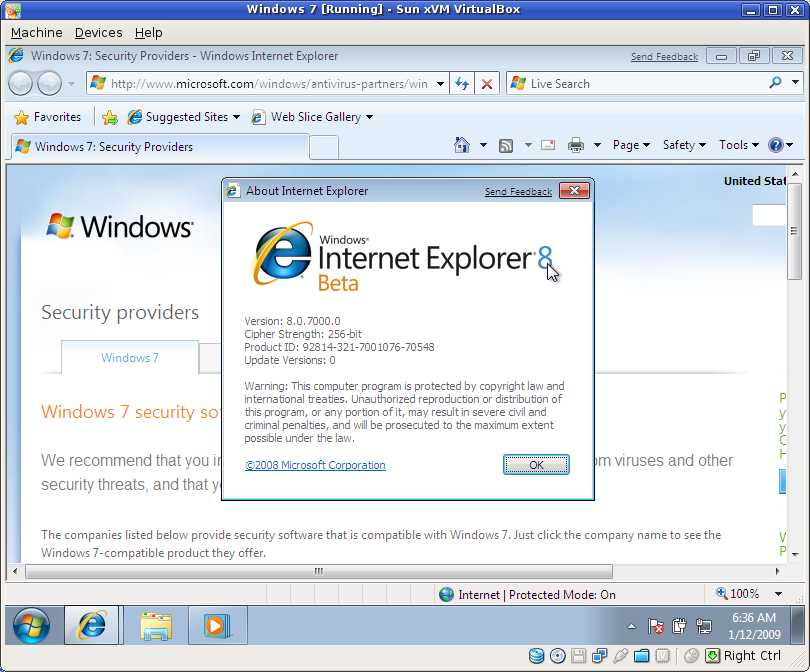
Oh oh!! It's Internet Explorer 8! Chews up my site like a charm.
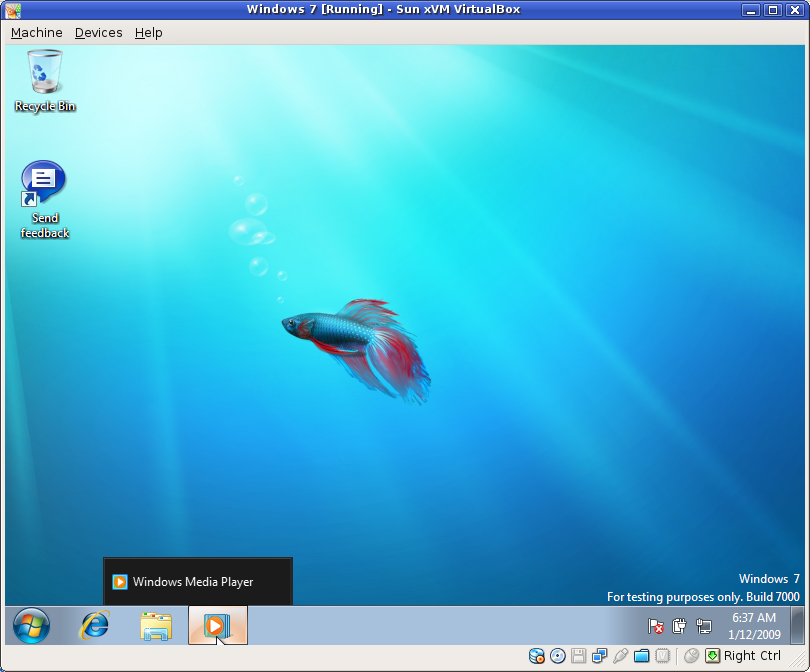
Captionless taskbar icons until you hover.
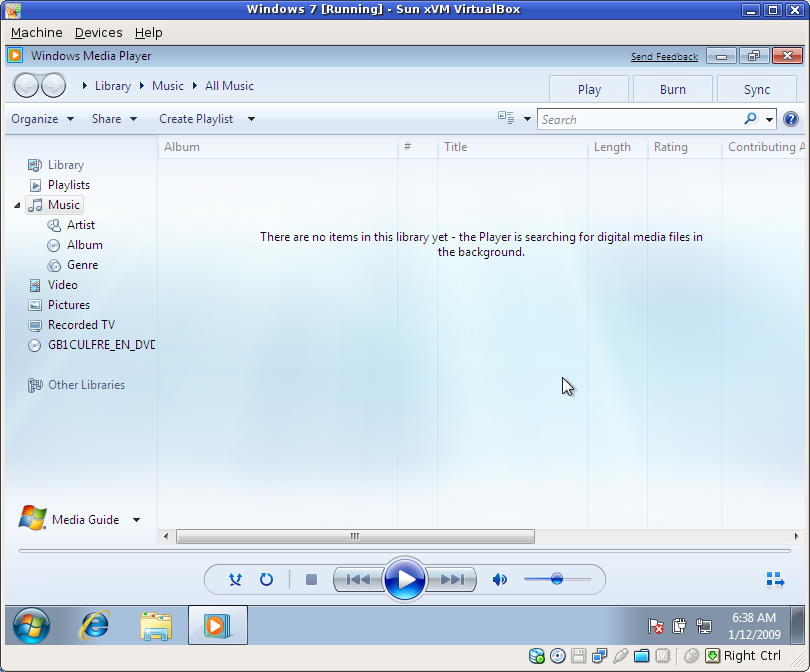
The new Windows Media Player.
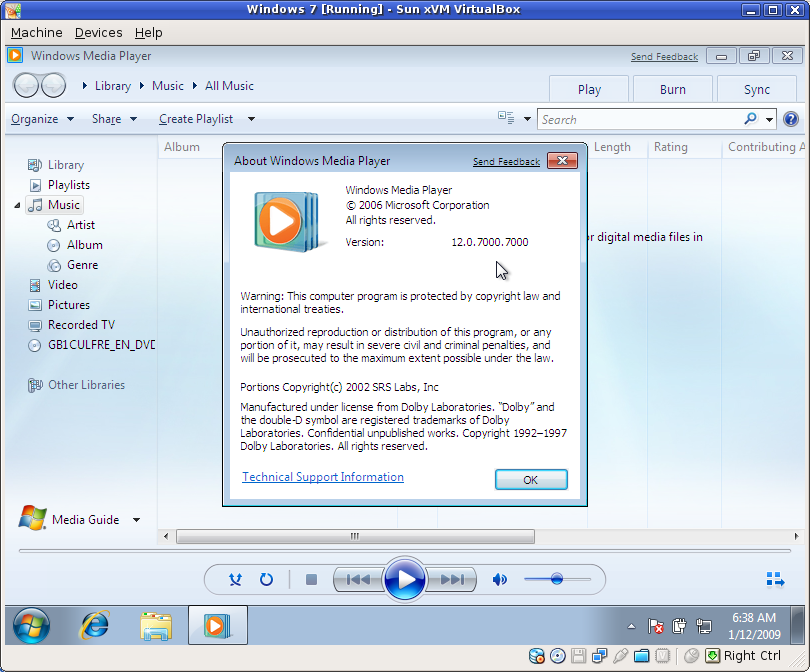
It's version 12!
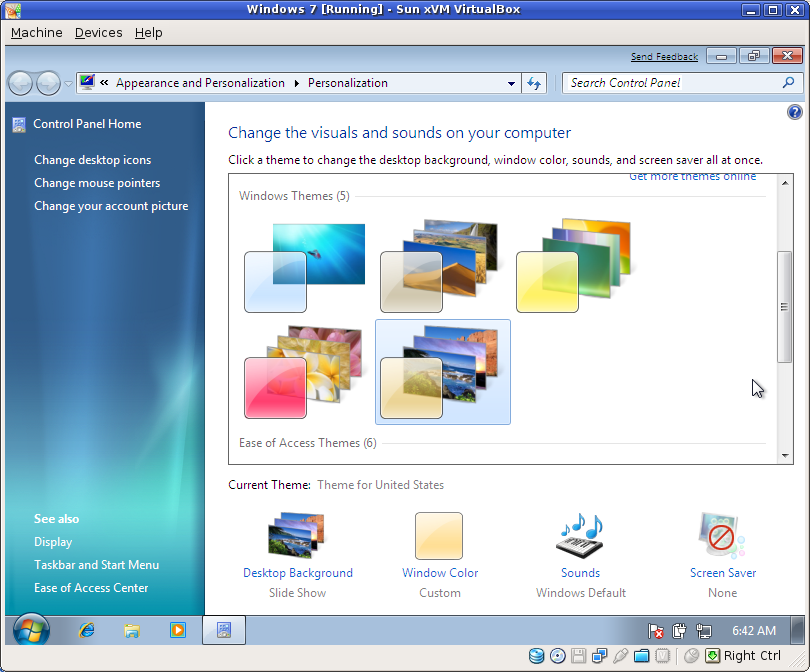
Setting your desktop theme.
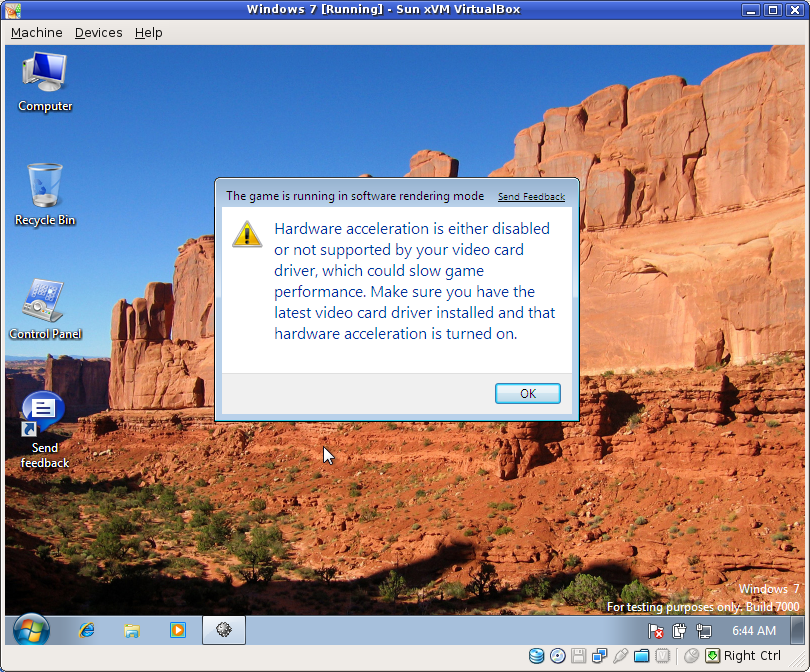
Minesweeper wants hardware accelerated graphics.... why??

The all-new Minesweeper.

I won!

Paint. Very perty.
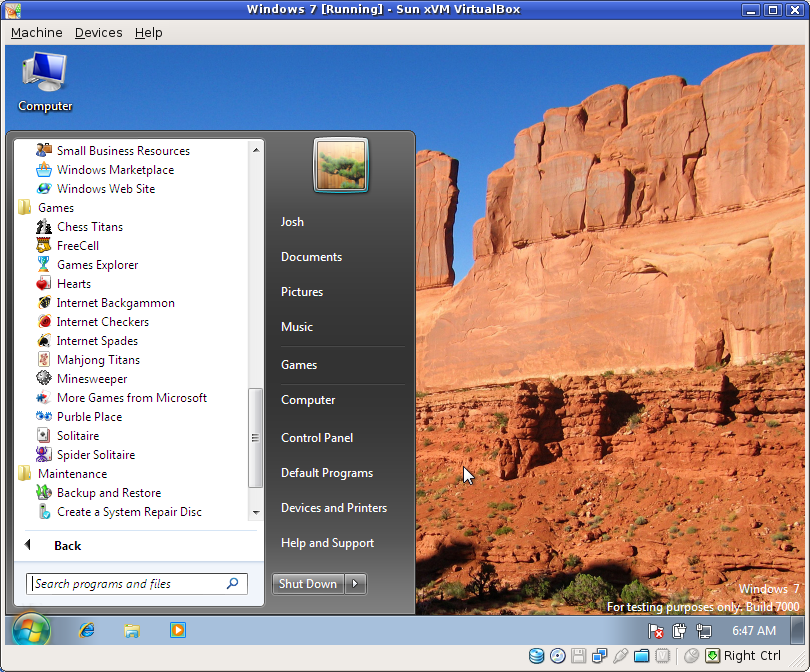
The start menu.
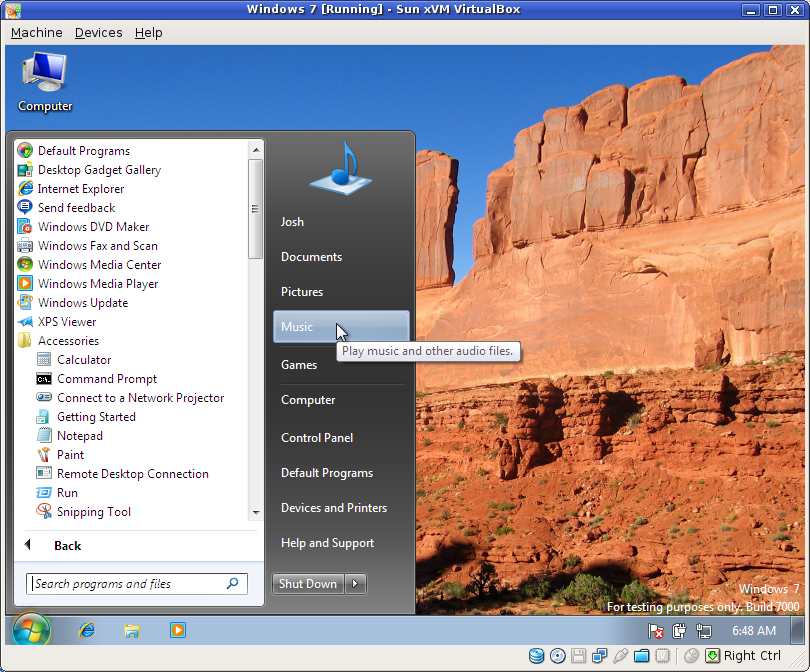
Looking at all programs in the start menu.
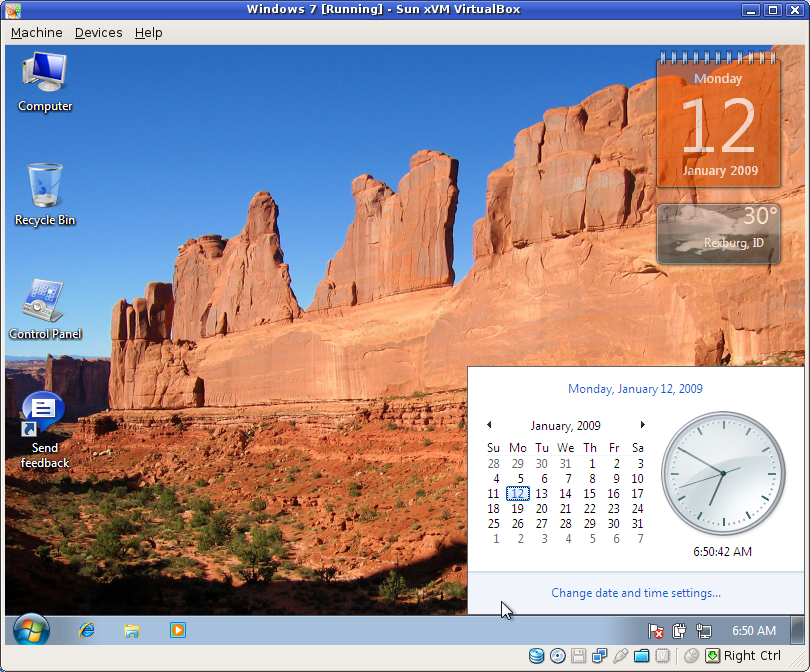
Some desktop gadgets and the clock thingy.

Slashdot in IE 8.

Downloading Google Chrome.

What the....? Verifying application requirements??

Ahh... Chrome.
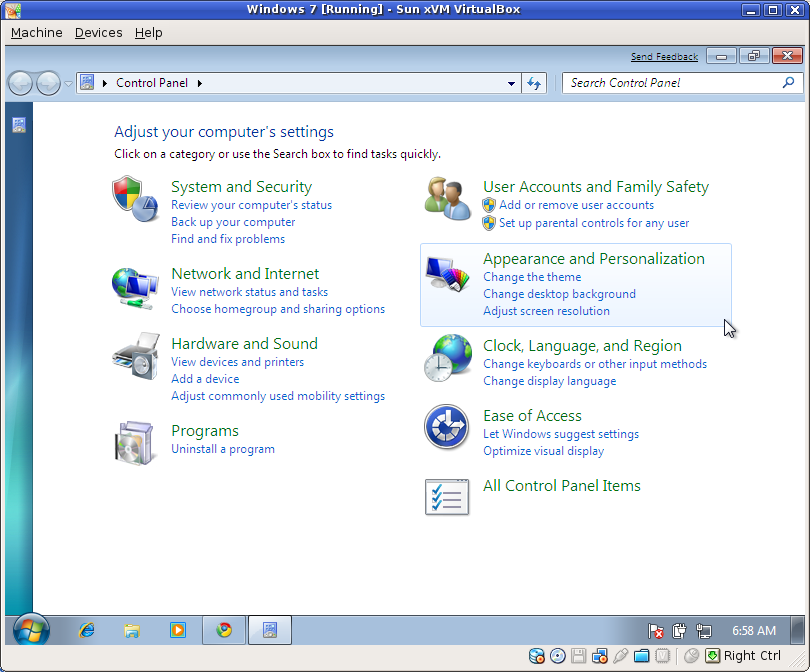
Control Panel--stupid people's version
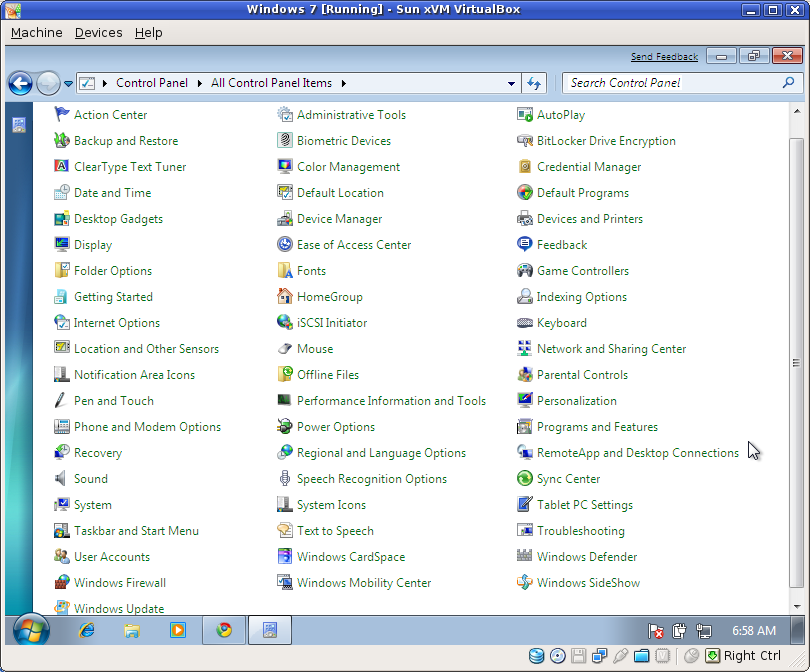
Control Panel--all options
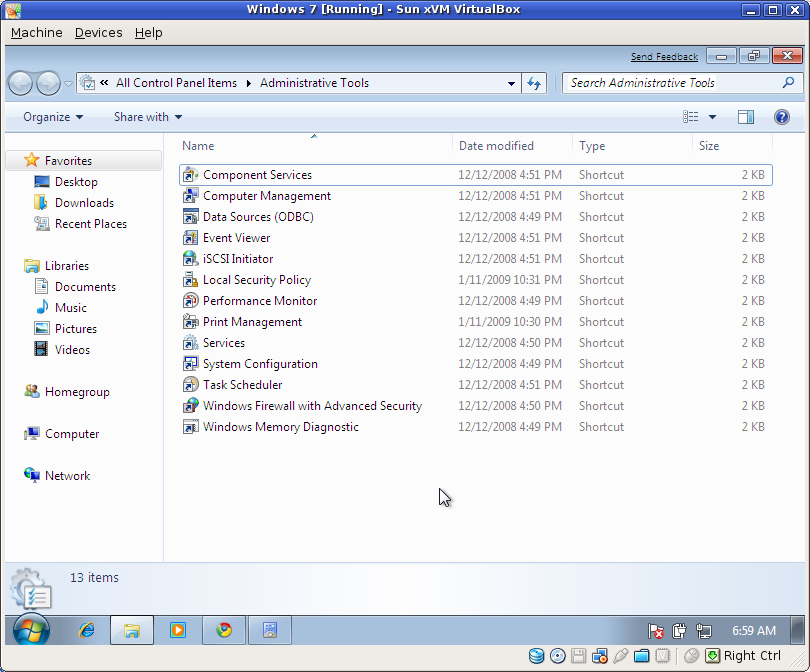
Administrative tools
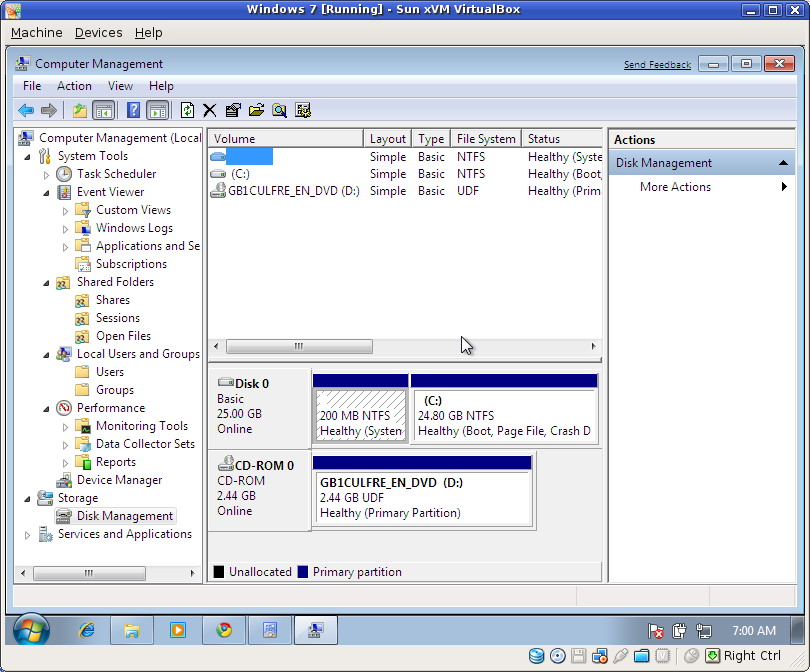
Some things never change... but what's up with the 200MB partition??

First UAC popup...

Second UAC popup...
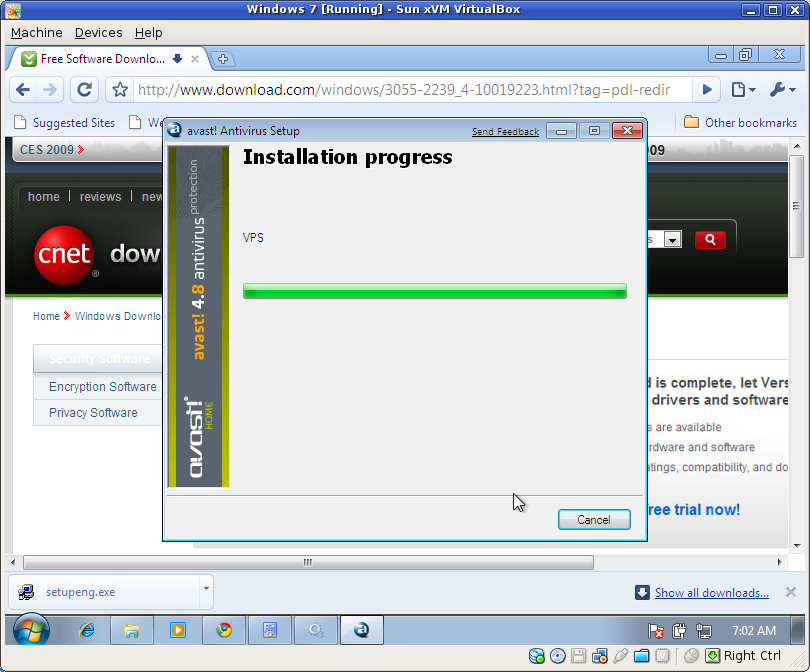
Installing Avast Antivirus.
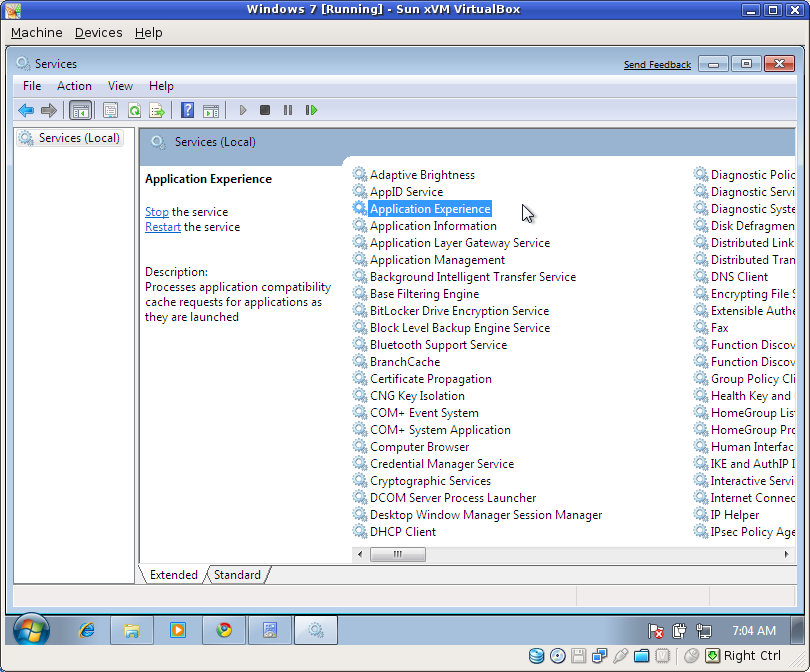
Windows services.... there are a ton of these as usual.
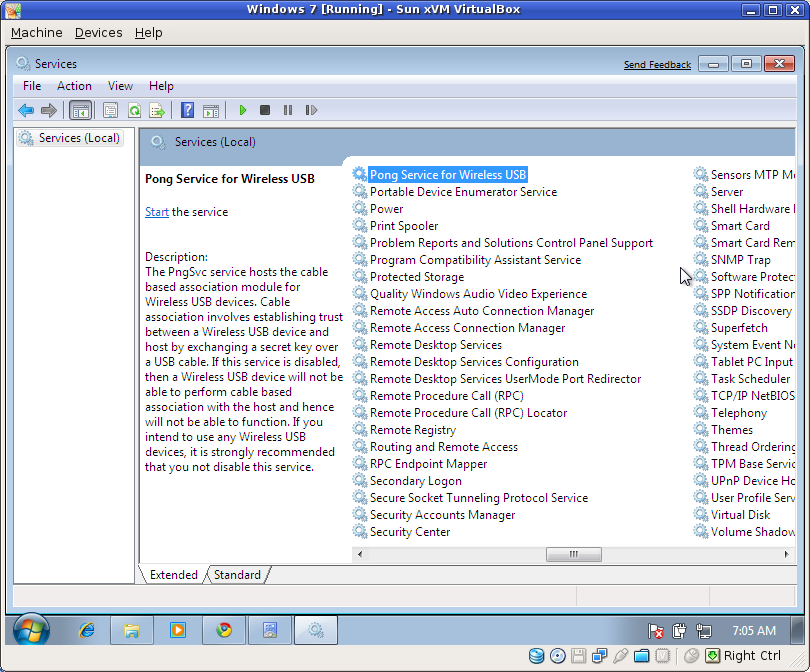
Pong Service for Wireless USB??
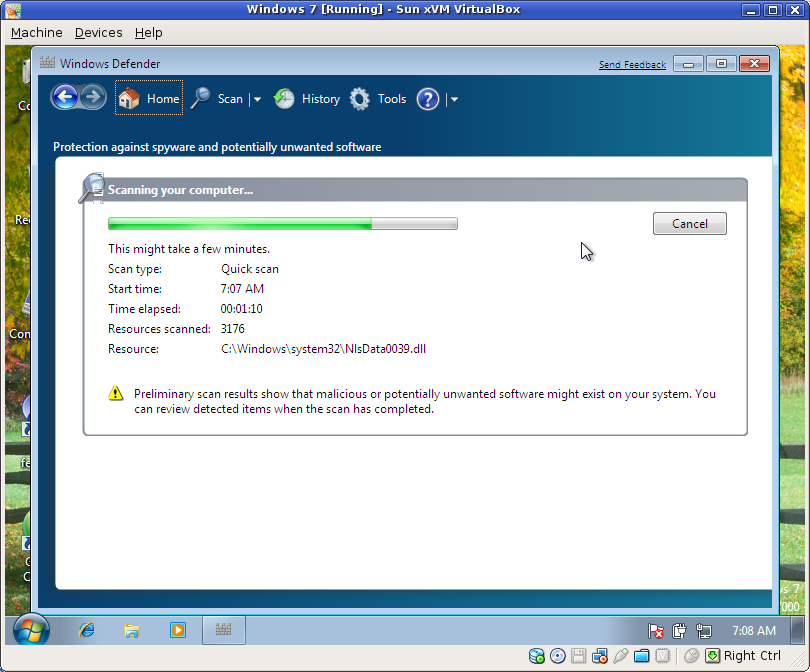
Heh... Preliminary scan results show that malicious or potentially unwanted
software might exist...
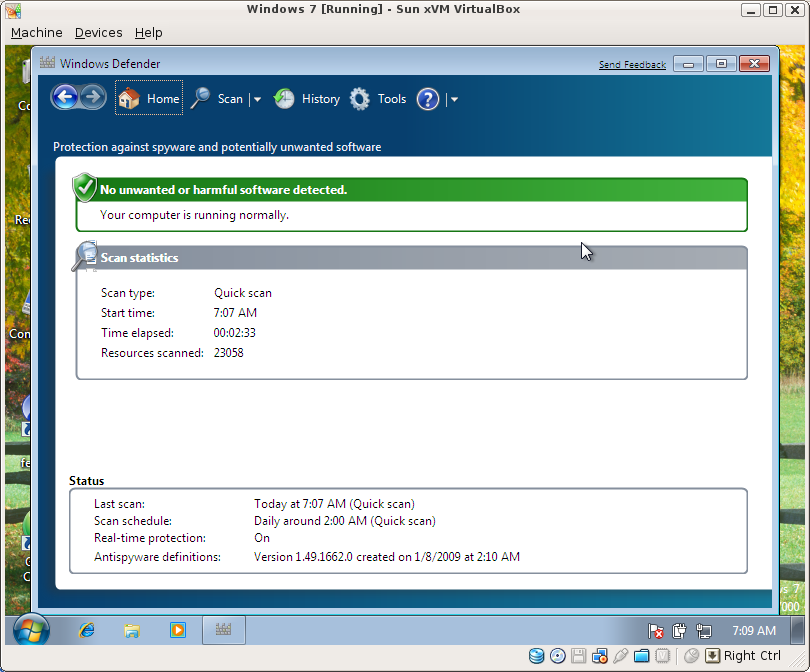
Oh, nevermind... Windows says we're good now.

Shutting down... took long enough to get a delayed screenshot. Could have
probably shot 20 more.

Stage 1 of the sloading screen.
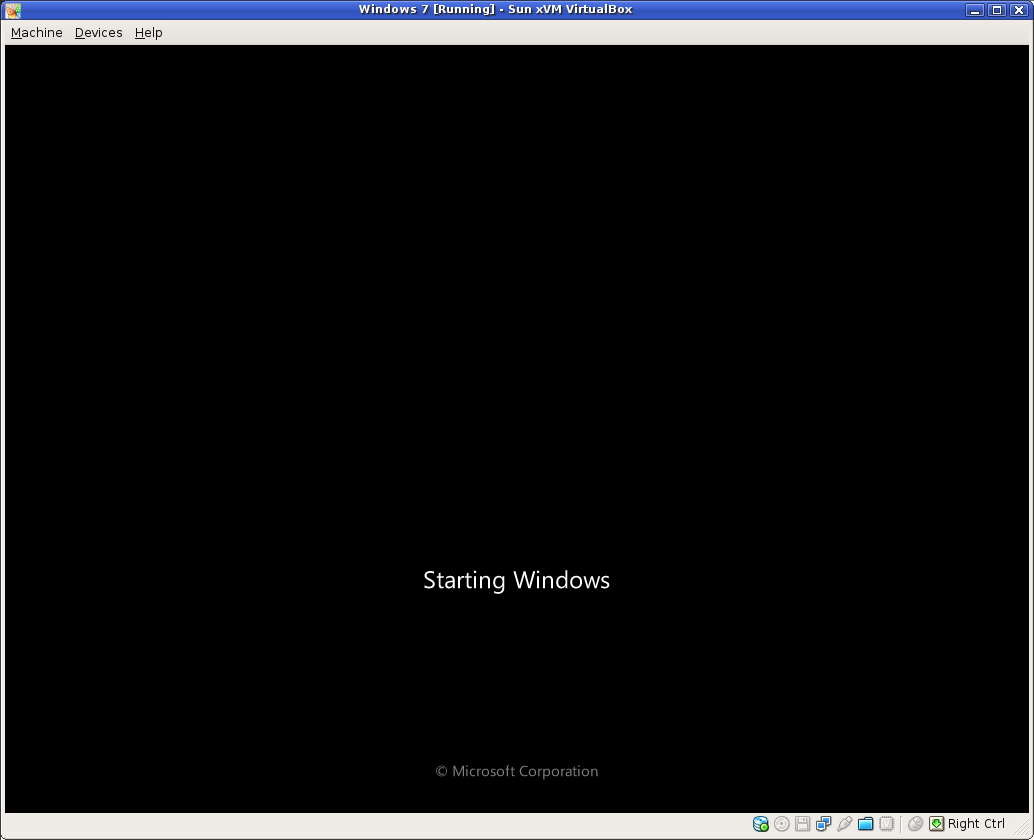
Stage 2 of the sloading screen.
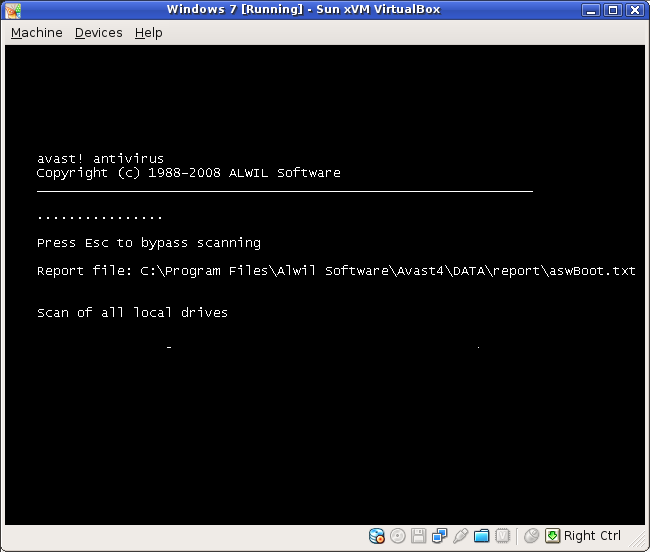
Avast has started its scan.
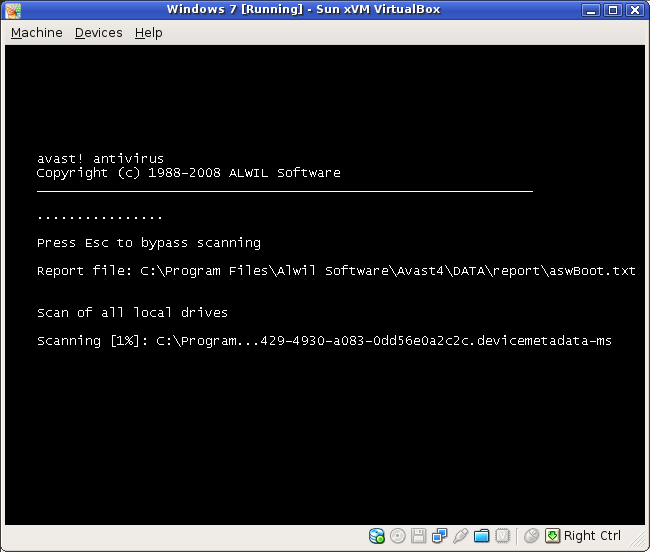
1% complete... after a few minutes!!
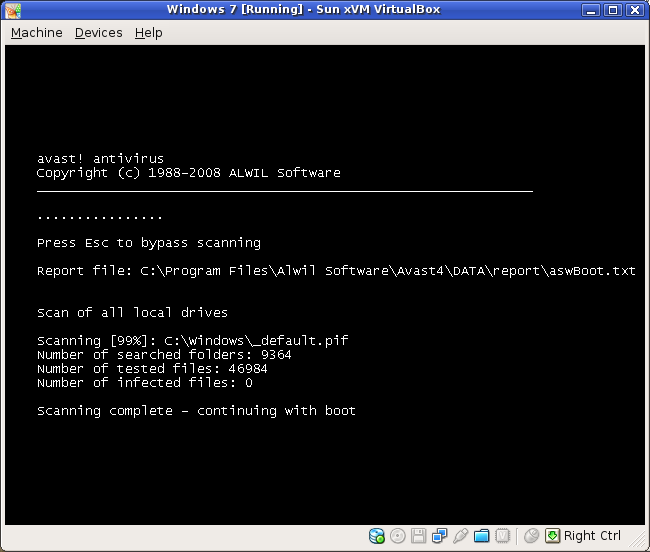
Done! after about 30 minutes...
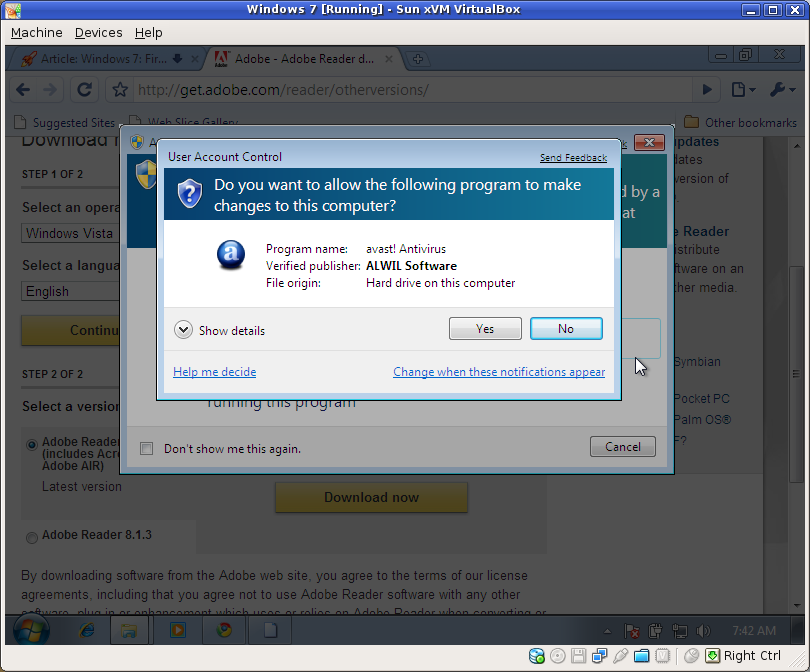
Third UAC popup...
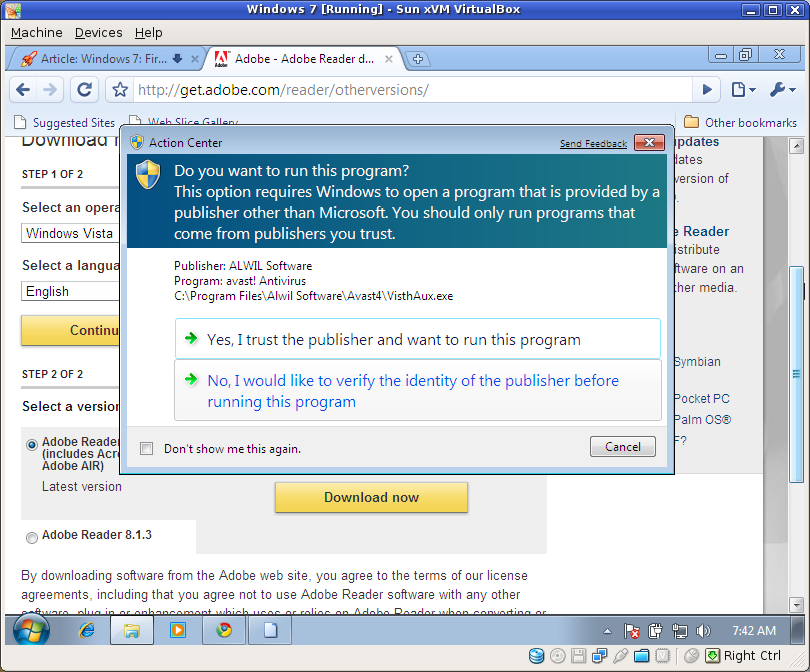
Trusted publishers? These two screens kept coming up each time I would try to
update Avast's antivirus database...
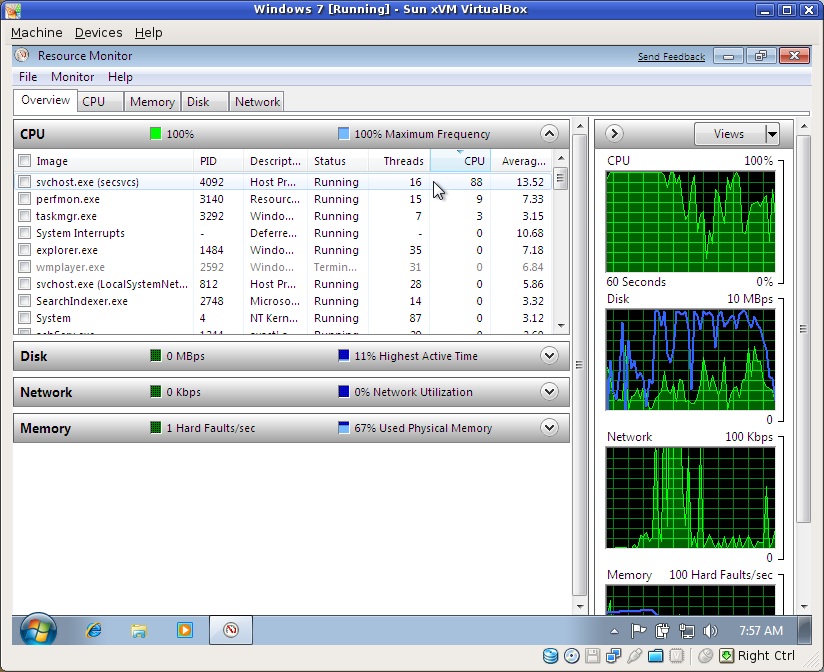
The Resource Monitor. I was doing nothing at the time.
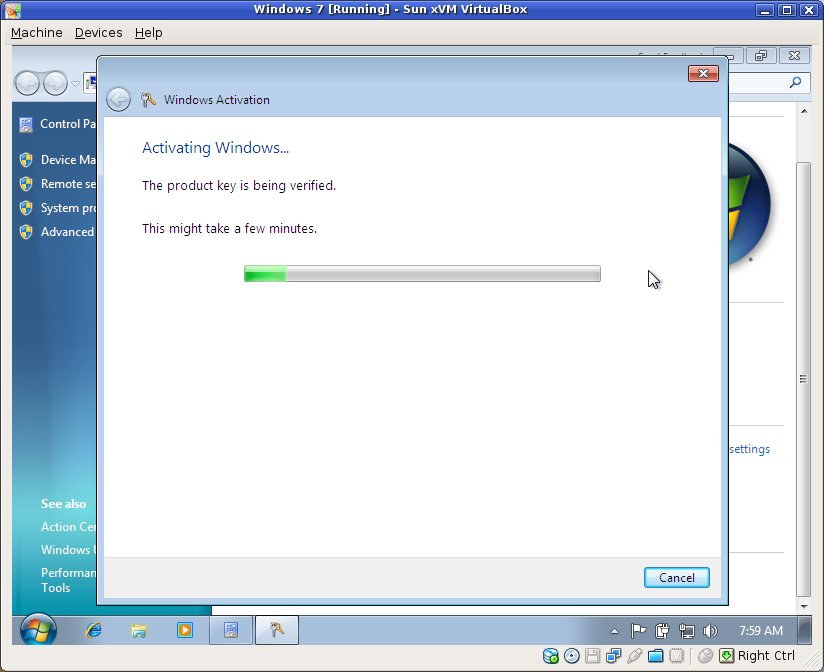
Activating my copy of Winders 7
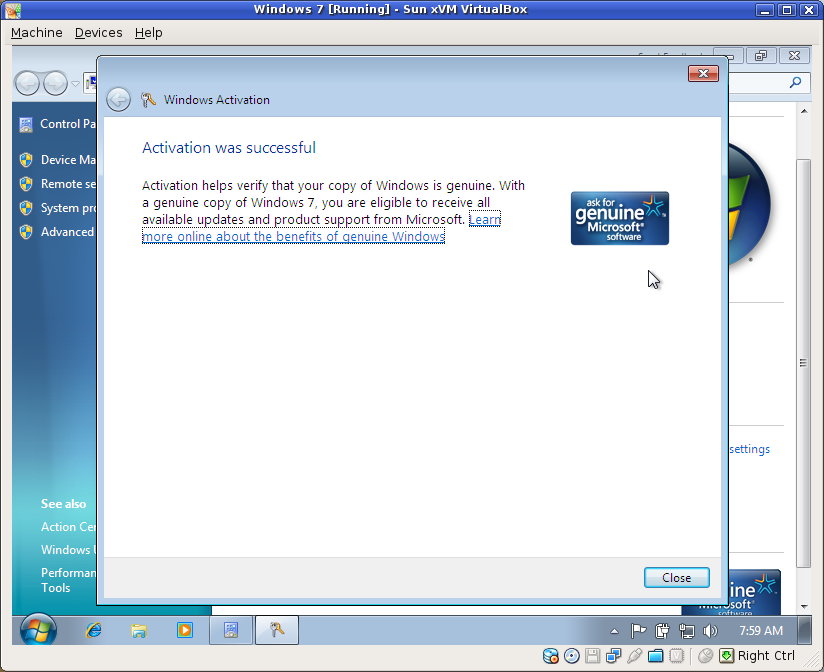
w00t. I'm legit.
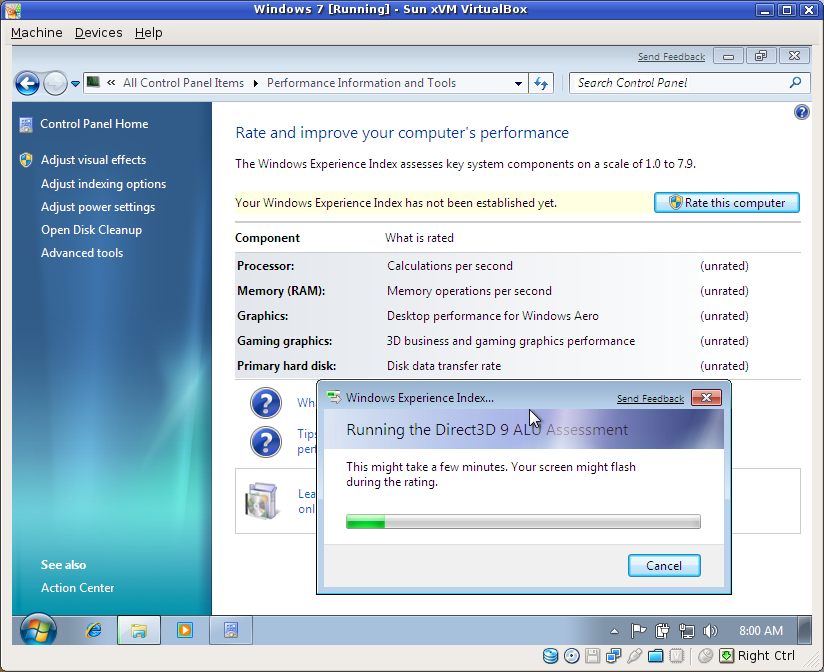
Benchmarking my system.
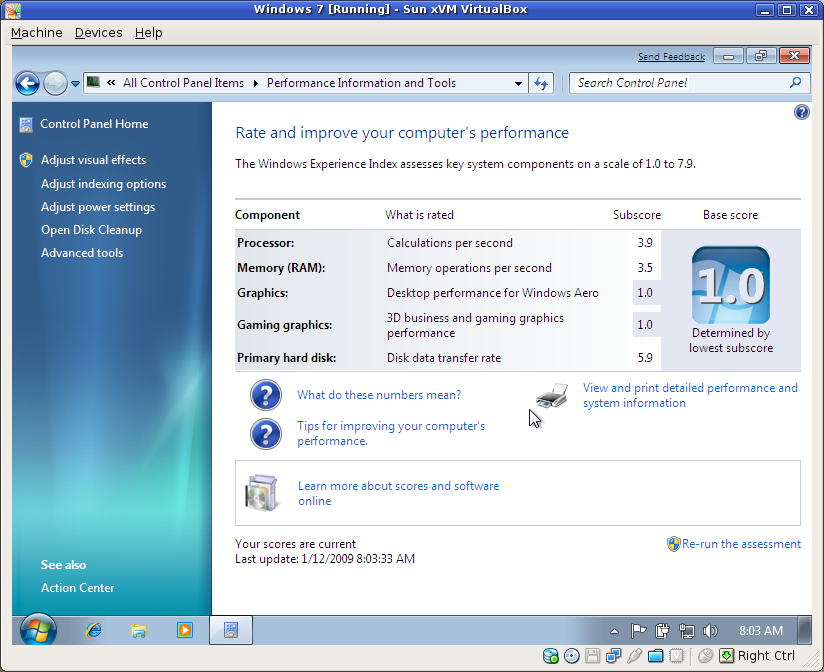
My VM ranks in at a solid 1.0!
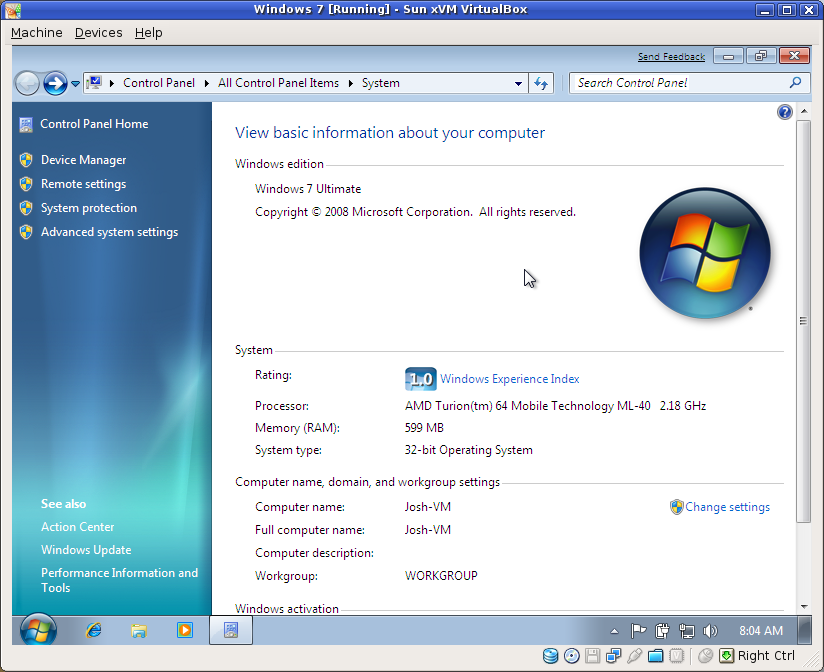
Details, details...
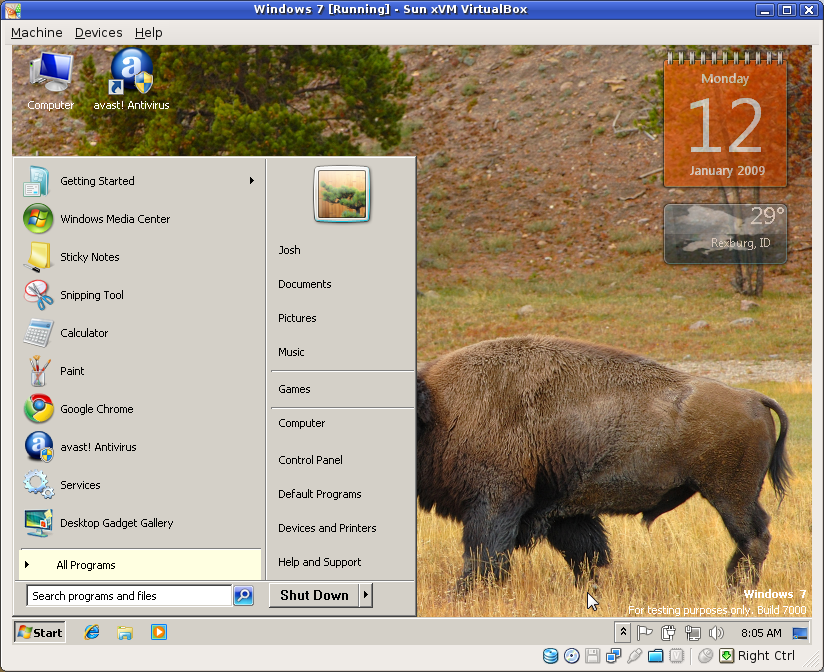
The classic Windows theme and a buffalo butt...
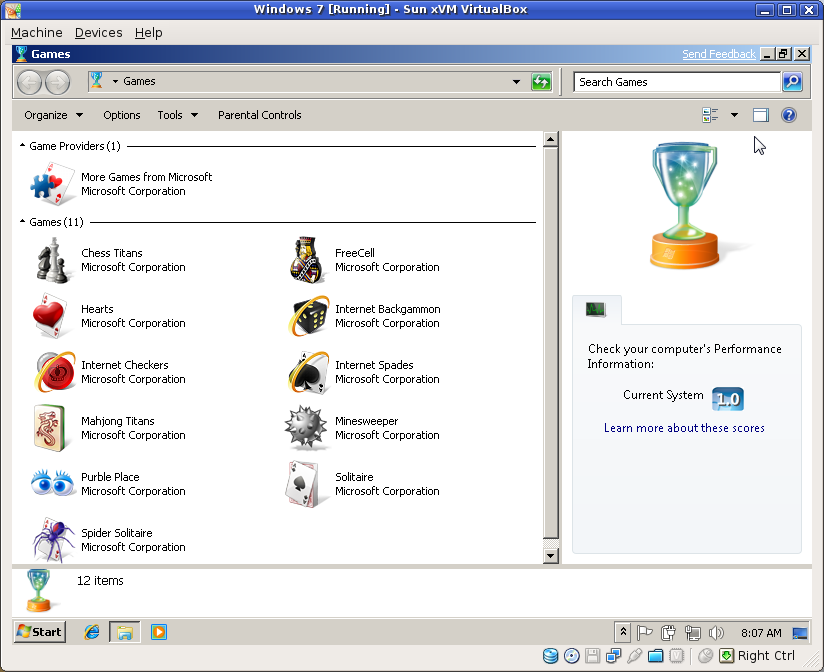
Why all the games?? Why not include something a little more productive??


















































